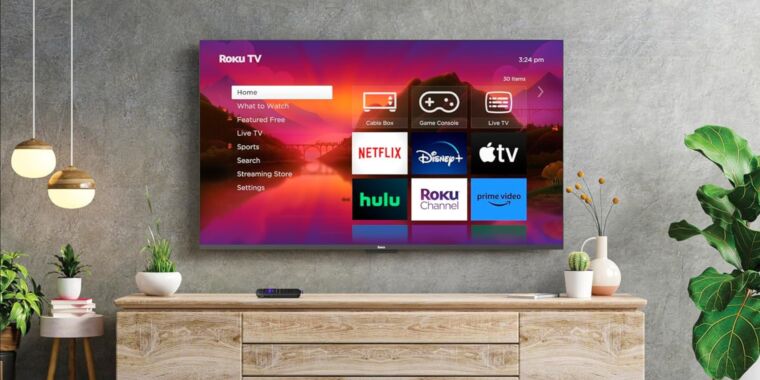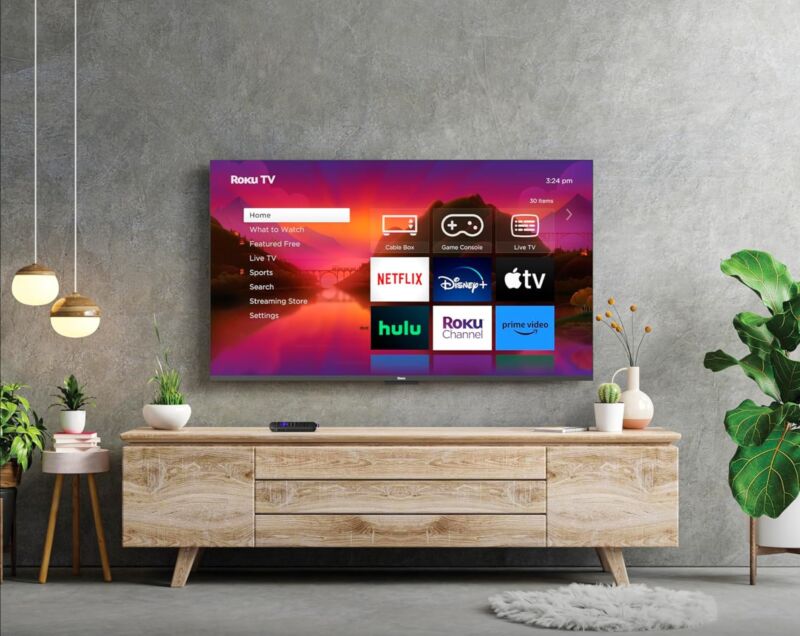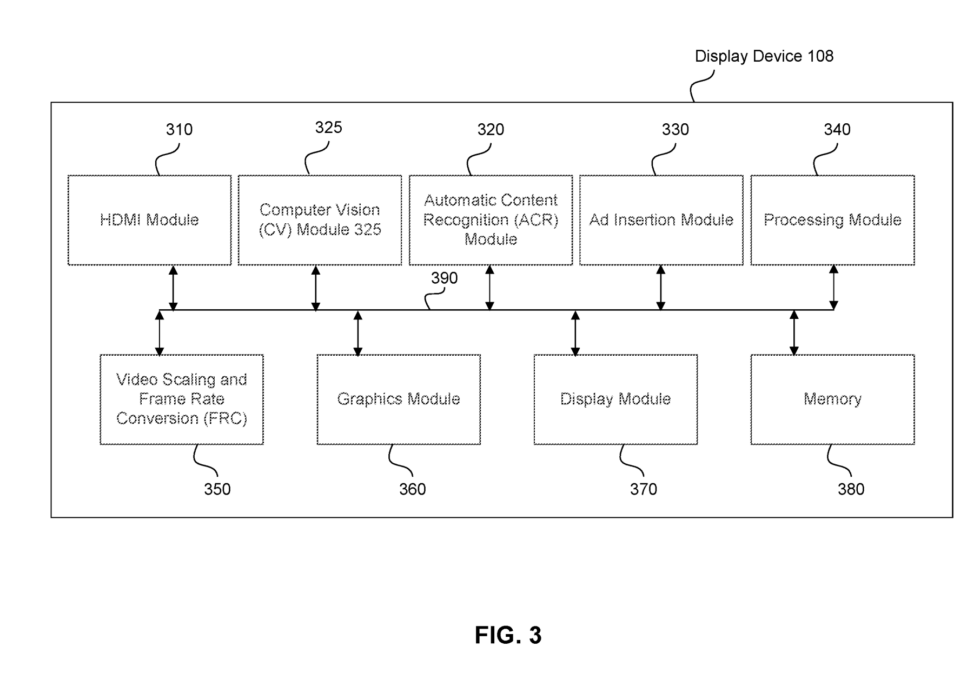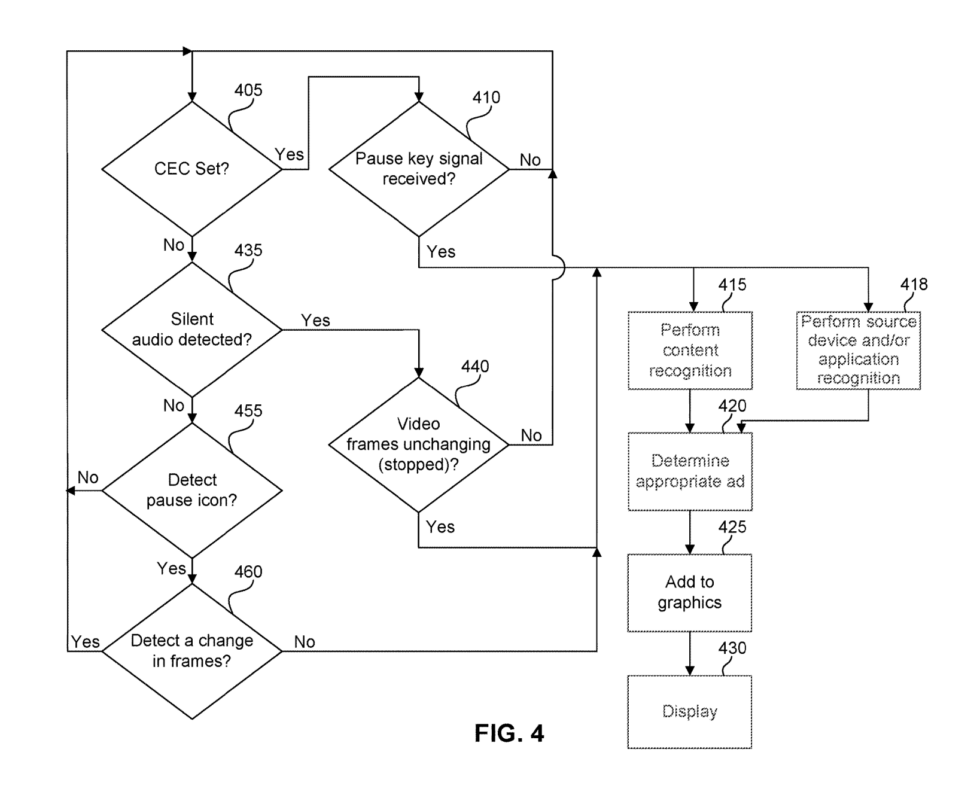Roku has patented a way to show ads over anything you plug into your TV

giving us pause —
System would detect paused content on external devices and show ads on top.

Enlarge / A promotional image for a Roku TV.
Roku TV sets come with ads. Generally, these are restricted to Roku’s home and menu screens, its screensavers, and its first-party video channels, and once you start playing video, the only ads you’ll see are the ones from the service you’re streaming from. That said, Roku TVs have shown ads atop live TV before.
Now, the company is apparently experimenting with ways to show ads over top of even more of the things you plug into your TV. A patent from spotted by Lowpass describes a system for displaying ads over any device connected over HDMI, a list that could include cable boxes, game consoles, DVD or Blu-ray players, PCs, or even other video streaming devices. Roku filed for the patent in August 2023 and it was published in November 2023, though it hasn’t yet been granted.
The technology described would detect whether content was paused in multiple ways—if the video being displayed is static, if there’s no audio being played, if a pause symbol is shown anywhere on screen, or if (on a TV with HDMI-CEC enabled) a pause signal has been received from some passthrough remote control. The system would analyze the paused image and use metadata “to identify one or more objects” in the video frame, transmit that identification information to a network, and receive and display a “relevant ad” over top of whatever the paused content is.

Enlarge / The proposed Roku device would include multiple modules dedicated to detecting and analyzing onscreen content and inserting ads over top of an existing video stream.
Roku
This theoretical Roku TV’s internal hardware would be capable of taking the original source video feed, rendering an ad, and then combining the two into a single displayed image. Combining those video streams could enable both static or animated ads, according to the patent.
Patents are just patents. A filed and granted patent isn’t the same thing as a concrete plan to actually implement the technology described in the patent. We could see this feature come to future Roku TV sets exactly as described, or we could never hear about it again. Everything from the cost of implementing the feature, to difficulty making it work in real life the way it works on paper, to user and partner backlash could dissuade Roku from putting this into practice.
But Roku the company is highly motivated to figure out more ways to make more money from more ads on Roku devices. Among the business risks disclosed on Roku’s financial filings from its 2023 fiscal year (PDF), the company says that its “future growth depends on the acceptance and growth of streaming TV advertising and advertising platforms.”

Enlarge / Roku’s proposed workflow for detecting paused content and displaying an ad on top of it.
Roku
If implemented as described, this system both gives Roku another place to put ads, and gives the company another source of user data that can be used to encourage advertisers to spend on its platforms. Roku also anticipates that the general shift toward ad-supported streaming tiers that we’ve seen in the last couple of years will “shift… ad dollars from traditional TV to streaming,” (PDF) and having more places to put ads will put Roku in a better position to capitalize on that shift.
It’s unclear whether this kind of feature could be enabled on currently supported Roku TVs with a software update, or if it would require a newer set with newer hardware in it. It seems as though a Roku TV that was capable of this kind of ad insertion would need more sophisticated internal hardware than most current sets currently come with—this is the same company that feuded with Google a few years back because it didn’t want to pay for more-expensive chips that could decode Google’s AV1 video codec.
![4 free ways to screen record Windows 11 [2024 guide]](https://us-news.us/wp-content/uploads/2024/04/44416-4-free-ways-to-screen-record-windows-11-2024-guide-390x220.jpg)


